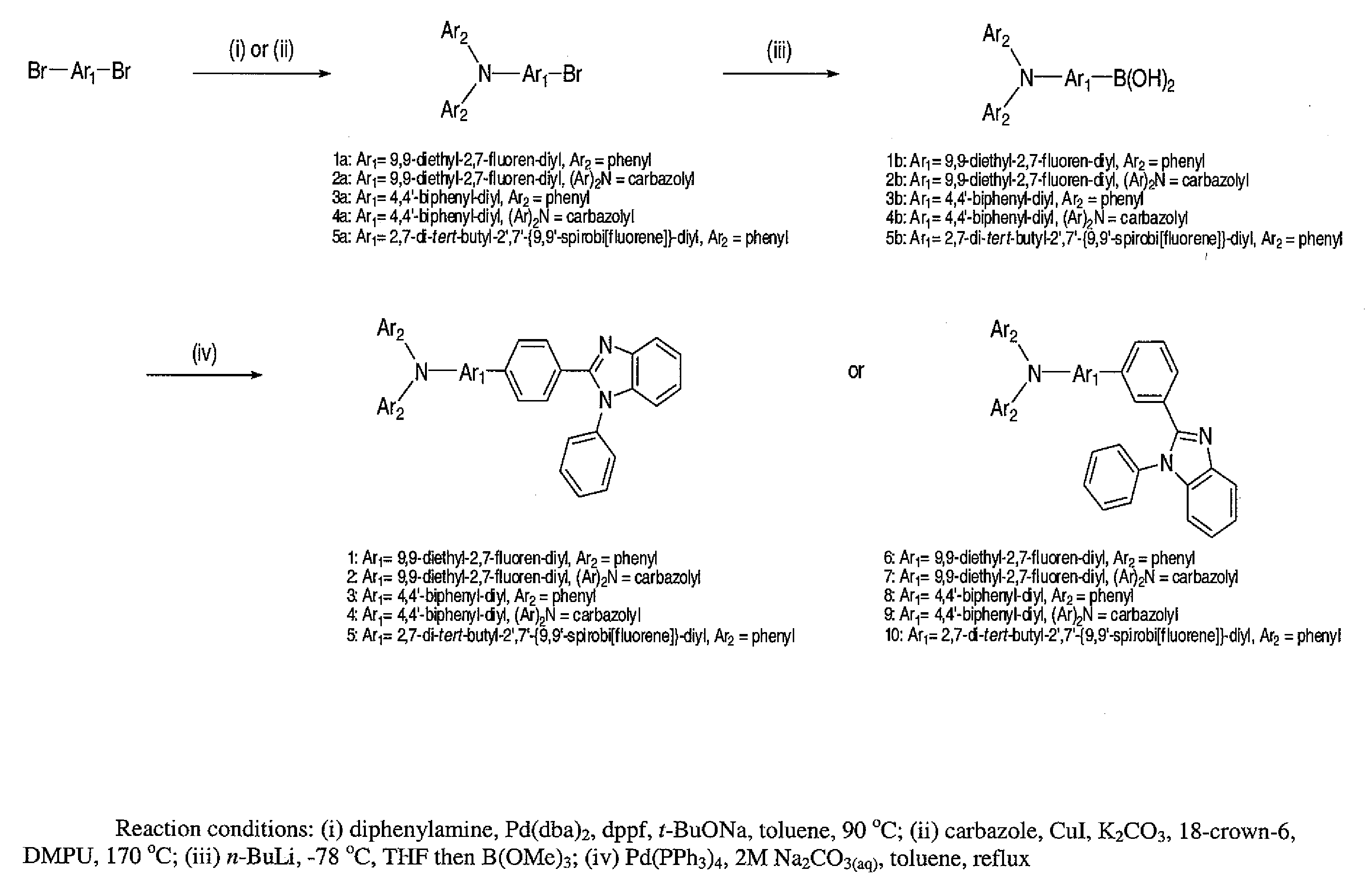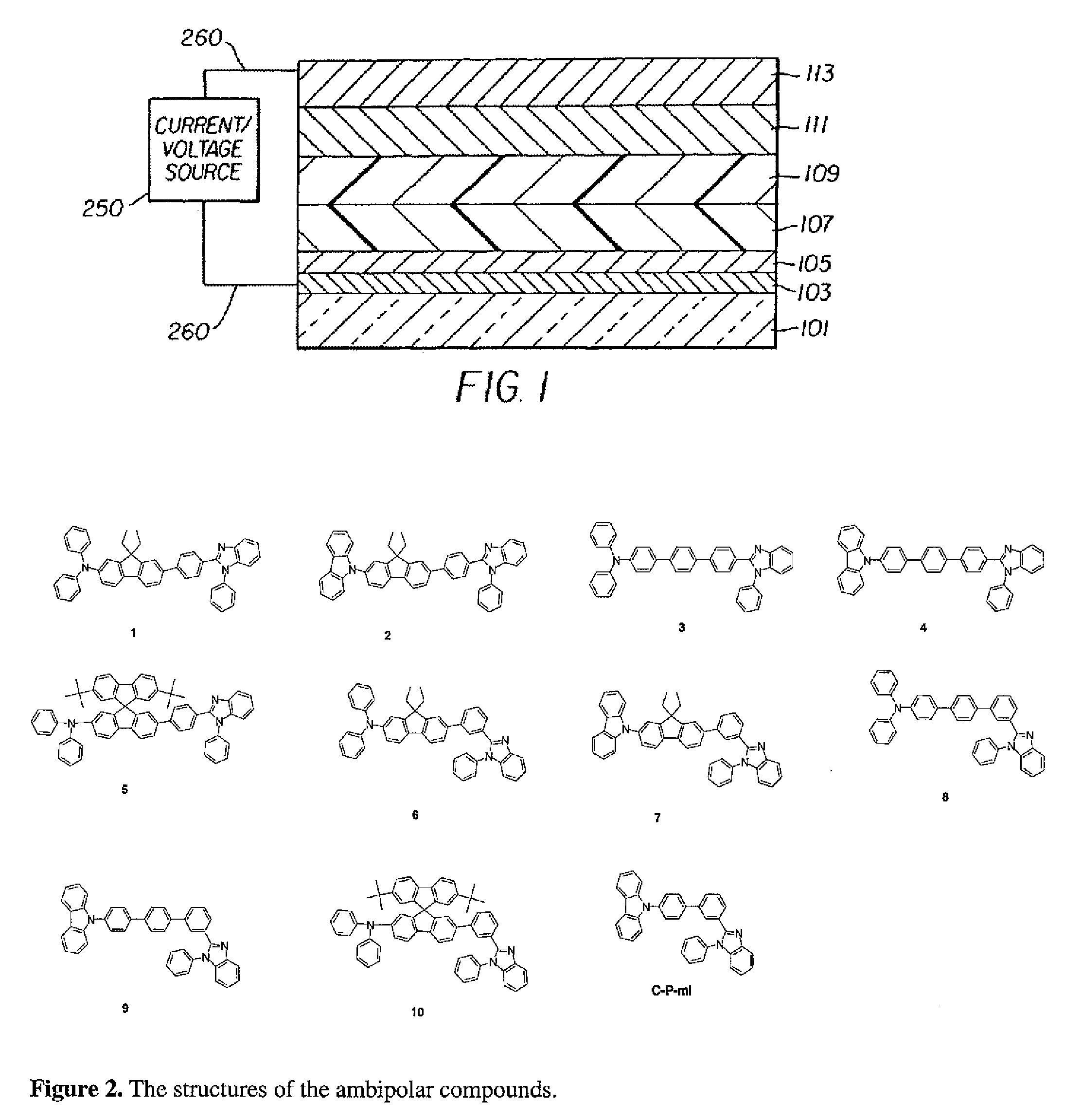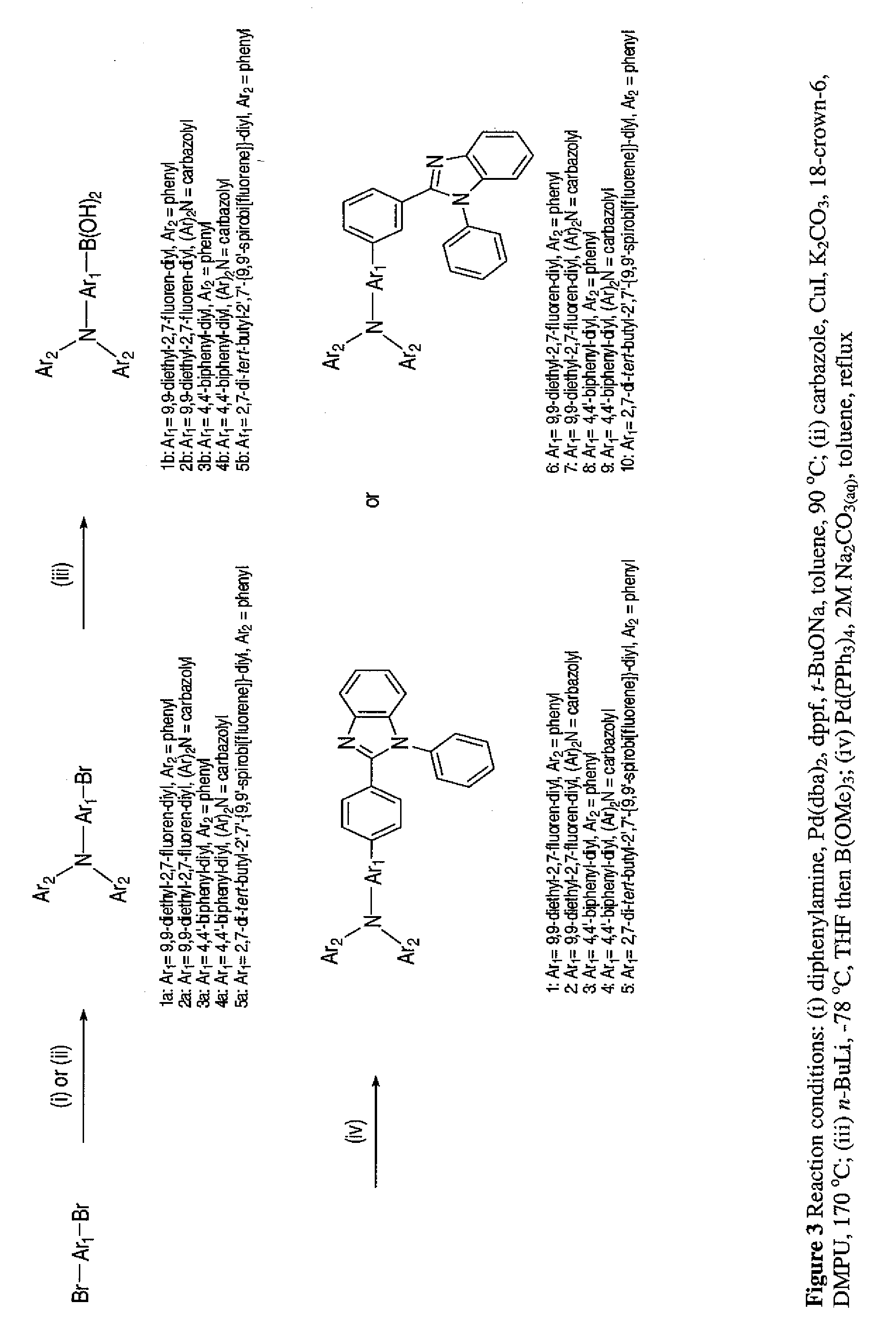Materials for organic light-emitting diodes
- Summary
- Abstract
- Description
- Claims
- Application Information
AI Technical Summary
Benefits of technology
Problems solved by technology
Method used
Image
Examples
Embodiment Construction
[0032]The following describes specific processes for the making and the properties of the compounds of the present invention.
[0033]2-(4-Bromophenyl)-1-phenyl-1H-benzo[d]imidazole (p-BPBI). To a flask containing N-phenyl-o-phenylenediamine (9.21 g, 50 mmol) and 4-bromobenzaldehyde (9.25 g, 50 mmol) was added 50 mL of 20-methoxyethanol. After the mixture was refluxed for 48 h, the volatile was removed under vacuum and the residue was extracted with CH2Cl2. The organic extract was washed with brine, dried over anhydrous MgSO4, filtered and pumped dry. The crude product was purified by column chromatography using a mixture of CH2Cl2 and n-hexane (1:1 by vol.) as the eluent. Analytically pure 2-(4-bromophenyl)-1-phenyl-1H-benzo[d]imidazole was isolated as a white solid in 72% (9.77 g) yield. 1H NMR (400 MHz, CDCl3): δ 7.68 (d, 1H, J=8.0 Hz), 7.35-7.29 (m, 4H), 7.24-7.20 (m, 1H), 7.15-7.02 (m, 7H). MS (FAB): m / z 348.9 (M+). Anal. calcd. for C19H13BrN2: C, 65.35; H, 3.75; N, 8.02. Found: C...
PUM
| Property | Measurement | Unit |
|---|---|---|
| Transport properties | aaaaa | aaaaa |
| Emissivity | aaaaa | aaaaa |
| Chemical structure | aaaaa | aaaaa |
Abstract
Description
Claims
Application Information
 Login to View More
Login to View More - R&D
- Intellectual Property
- Life Sciences
- Materials
- Tech Scout
- Unparalleled Data Quality
- Higher Quality Content
- 60% Fewer Hallucinations
Browse by: Latest US Patents, China's latest patents, Technical Efficacy Thesaurus, Application Domain, Technology Topic, Popular Technical Reports.
© 2025 PatSnap. All rights reserved.Legal|Privacy policy|Modern Slavery Act Transparency Statement|Sitemap|About US| Contact US: help@patsnap.com



